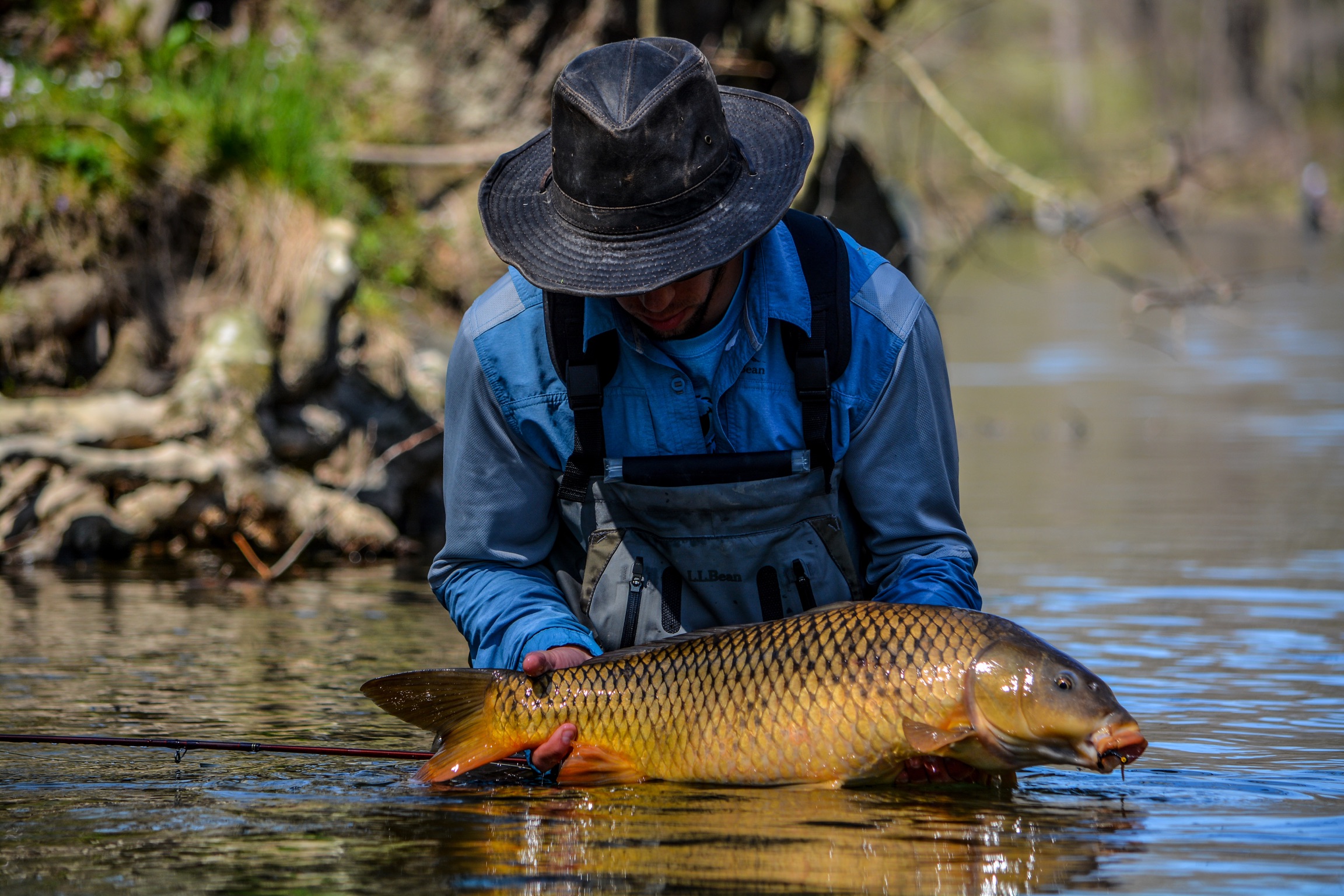Well, it seems like for more and more of us the weather is finally coming around with warmer temperatures and more and more fish starting to wake up from their winter slow-down and are beginning to move into their summer feeding waters. It’s during this time of year that carp begin to move from deeper wintering holes, up into the shallows to feed. Spring can be the best time of year to chase them as they are almost constantly on the feed trying to stack on weight after a slow winter. This makes the fly angler’s job a little bit easier but only by so much, as any experienced carp angler will tell you. So we want to break down a few places to start looking for Carp, so you can increase your chances of hooking into one of these challenging fish!
Focus on the Banks During Higher Water

Spring and early summer can mean rain, and sometimes, lots of it. But just because the main part of the river or body of water is high, doesn’t mean your shots are carp are gone. During high water events, carp take advantage of the new aquatic real estate and move in the shallows near the water’s edge grubbing for whatever they can find. When they are feeding like this, slow, stealthy moves need to be used to sneak up on them before you drop your fly in front of their face.
Fish the Shallows on Warm, Sunny Days
Find flats or shallow areas in your waters that will be in the sun most of the day, during the spring, carp follow warmer water currents to find new foraging grounds, and water being warmed by the Sun is the perfect place to start looking for happy carp feeding along the bottom. When they feed like this, the best way to spot a feeding carp is by the telltale mud plume coming up off the bottom, once you identify which direction your intended target is facing, position yourself so the fish can’t see you and begin making casts. Make sure to keep your shadow out of the fish’s path to ensure he won’t get a chance to sense you and spook.
Check the Marginal Waters

Carp are almost always on the move looking for their next meal and typically they follow warmer water, and during high water events especially they follow the clearer water. This means that you should also be checking feeder creek mouths and any other water sources that flow into where your carp reside. Often times, I find the fish laid up in the outflows feeding on stuff being washed down the streams. Another nice aspect of finding the fish laid up in creek mouths is that they typically won’t spook back into the dirty water, giving you a few more precious moments to get your fly in the right spot!
Late Spring Carp Food Sources

During the spring, most life in warm water fisheries is starting to wake back up and get active. Nymphs are crawling around in the mud and rocks, tadpoles and leeches are squirming around in the shallows and crawfish are starting to wake up after their winter hibernation. This all means that you should have a few different types of flies in your carp box. During this part of the year, I like to use larger black nymphs with rubber legs, worm flies, and of course the dreaded mop fly to target pickier carp. But perhaps the most fun way is sight fishing them with streamers like leeches or crawfish flies. When Carp are on the hunt for these, you will experience why many people refer to these fish as golden bonefish, as you watch a carp follow your fly and finally inhale your offering and take off running!
https://postflybox.com/blog/2019/04/30/8-things-to-get-ma-this-mothers-day/
https://postflybox.com/blog/2019/04/29/what-you-need-to-start-fly-fishing-for-schoolie-striped-bass/
https://postflybox.com/blog/2019/04/24/how-to-fish-emergers-and-soft-hackles-this-spring/

Dan Zazworsky’s passion is sharing his love of fly fishing with anyone that will listen, read or watch. You can find him exploring new waters every day while chasing any fish that will eat a fly!






One thought on “How to Target Big, Late Spring Carp”